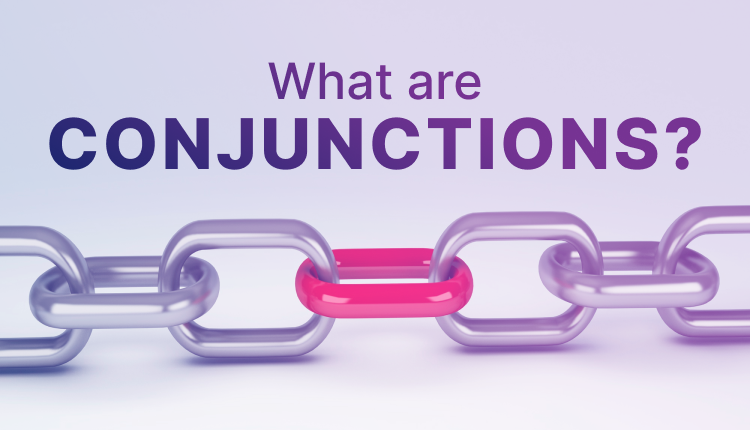What makes sentences so smooth? Often, it all depends on the subtle and powerful world of conjunctions. Little words connect thoughts, ideas, and clauses in such a way that they become clear and coherent.
Whether you’re a young student learning to write or someone who simply has a passion for language, this is one of those things you might want to know about conjunctions. So let’s see what it is, along with its definitions and examples!
What Is a Conjunction? Definition and Examples
A conjunction is that word which makes a connection of phrases, clauses, or sentences. Conjunctions assist to build up a relationship amongst ideas as well as clarify them. The examples of conjunctions are “and“, “but“, and “or“. By the use of strong conjunctions, you can make more flowing, interesting sentences to your readers.
Conjunctions are one of the simplest, yet very rich components of the language, especially when they connect words, phrases, or clauses. They significantly enhance the construction of sentences and the way of communication. Only with the knowledge of conjunctions will one’s writing become clearer and more interesting. Let us now go through these conjunctions and their types and uses to uncover better expressions in our conversations.
Types of Conjunctions
Conjunctions can be categorized into three primary types: coordinating, subordinating, and correlative. Coordinating conjunctions join elements of equal rank or status, while subordinating conjunctions connect dependent clauses to independent ones. Correlative conjunctions are used in pairs to join together different parts of a sentence without showing disconnection. Knowing them better helps to improve clarity when writing.
Coordinating Conjunctions
Coordinating Conjunctions connect words, phrases, or clauses that have the same grammatical structure. The most common coordinating conjunctions are “and,” “but,” “or,” “nor,” “for,” “so,” and “yet.” They can help you gain a balanced rhythm in your sentences and be clear when joining closely related ideas to a sentence by just using one sentence.
Subordinating Conjunctions
Subordinating conjunctions link dependent clauses to independent ones. Subordinating conjunctions introduce subordinate clauses and add depth and complexity to sentences. Among commonly used are the words “although,” “because,” and “while.” These words actually help clarify relationships between ideas, as it points out time, cause, condition, or contrast within the sentence structure.
Correlative Conjunctions
Correlative conjunctions occur in pairs. They serve to join equal elements of a sentence. Some common ones are “either……or,” “neither……nor,” “both……and.” Of course, making ideas clearer by joining them together, sentences are connected and well-balanced as if they are combined phrases or clauses.
How Conjunctions Work?
Conjunctions join words, phrases, or clauses in a sentence. They provide complexity to ideas by offering a way to connect related elements. Understanding what conjunctions do may even improve sentence flow and clarity. When you write clearly, your sentences will become better sounding and will flow more coherently. It has much to do with effective communication.
Examples of Conjunctions
Conjunctions connect ideas many times. For instance, “and” joins comparable ideas, “but” denotes contrast, and “or” provides options. Use “because” to indicate a reason, and “although” to enter a concession. And coordinating conjunctions that make the sentence flow better and more clearly.
Position of Conjunctions in a Sentence
The placement of conjunctions within a sentence is important for clarity. Coordinating conjunctions are commonly used to join independent clauses, and subordinating conjunctions are often used to join dependent clauses to the main idea. Correlative conjunctions come in pairs, so they naturally create balance. The right placement ensures a good flow and helps with understanding, allowing the reader to take his or her time to navigate through the meaning of the intended sentence.
Common Conjunctions
The most frequently used conjunctions are “and,” “but,” “or,” “so,” and “yet.” These words connect phrases, clauses, or sentences. Other examples include “although,” “because,” “unless,” and “either/or.” You will improve your writing if you familiarize yourself with these because they will help better explain your sentences in clarity and flow.
Correct Use of Various Conjunctions
That’s how the proper use of conjunctions adds more clarity to your writing. The major coordinating conjunctions are to connect ideas in similar rank, while the subordinating conjunctions introduce a dependent clause. Correlative conjunctions, on the other hand, are used in pairs to join equal elements. The difference is that crucial communications will be made crisp and give your sentences a depth that will make them richer to the reader, without losing the flow.
You’ll be well equipped in writing if you know your conjunctions. To that effect, you need the Trinka Grammar Checker to help you out. This grammar checker identifies the conjunctions and lets you know how you could use them appropriately to avoid confusing and ambiguities in your sentences.
Its advanced AI technology provides suggestions for improving sentence structures so that the right conjunction can be used at the right place. With Trinka, you’re not just polishing your grammar, you’re also doing something more with your writing.
Mastering conjunctions can enhance your communication skills as a student and, if you want to venture into the professional line, with greater confidence in the expression of your thoughts using Trinka.

